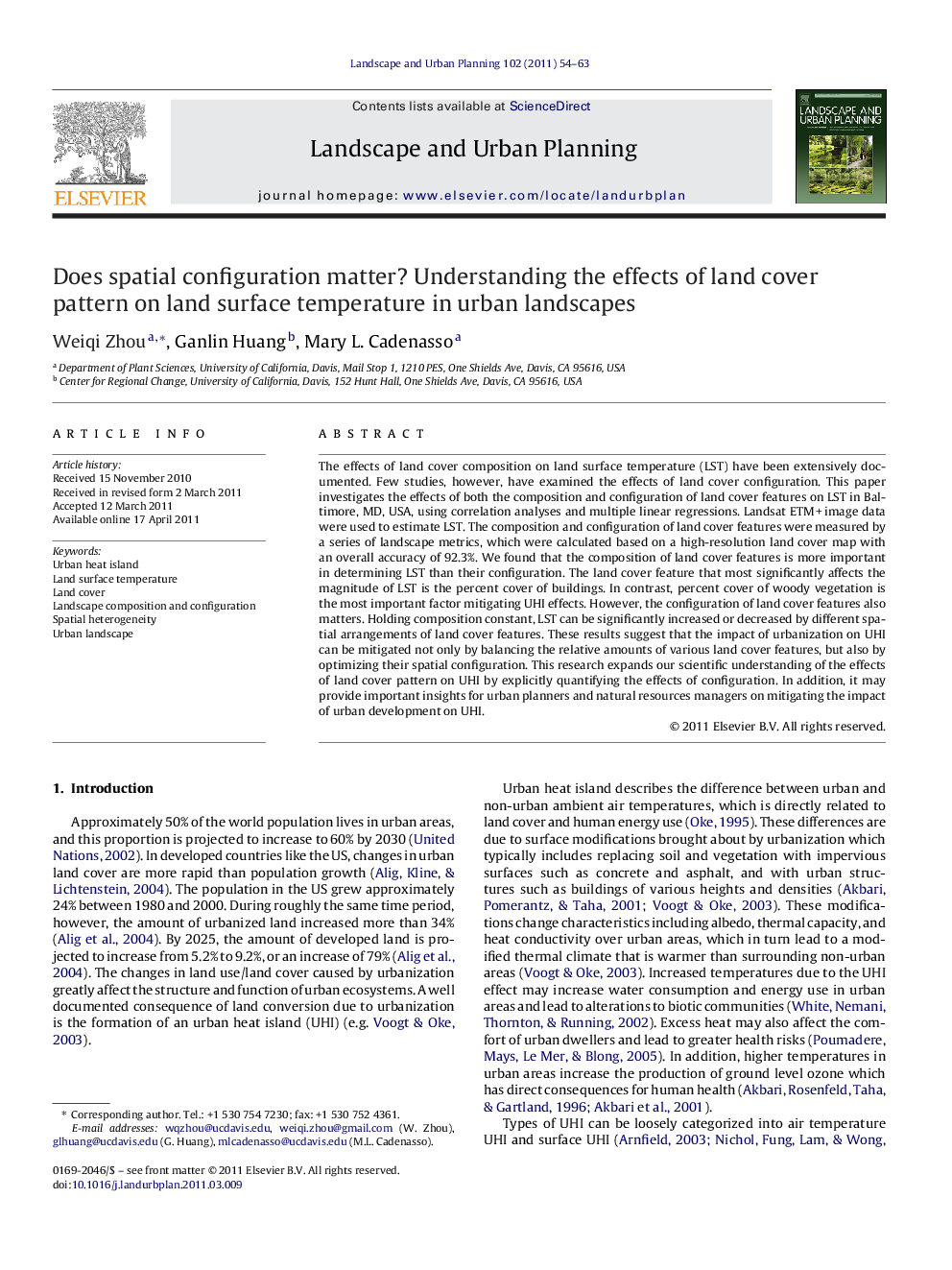| کد مقاله | کد نشریه | سال انتشار | مقاله انگلیسی | نسخه تمام متن |
|---|---|---|---|---|
| 1049722 | 945633 | 2011 | 10 صفحه PDF | دانلود رایگان |

The effects of land cover composition on land surface temperature (LST) have been extensively documented. Few studies, however, have examined the effects of land cover configuration. This paper investigates the effects of both the composition and configuration of land cover features on LST in Baltimore, MD, USA, using correlation analyses and multiple linear regressions. Landsat ETM + image data were used to estimate LST. The composition and configuration of land cover features were measured by a series of landscape metrics, which were calculated based on a high-resolution land cover map with an overall accuracy of 92.3%. We found that the composition of land cover features is more important in determining LST than their configuration. The land cover feature that most significantly affects the magnitude of LST is the percent cover of buildings. In contrast, percent cover of woody vegetation is the most important factor mitigating UHI effects. However, the configuration of land cover features also matters. Holding composition constant, LST can be significantly increased or decreased by different spatial arrangements of land cover features. These results suggest that the impact of urbanization on UHI can be mitigated not only by balancing the relative amounts of various land cover features, but also by optimizing their spatial configuration. This research expands our scientific understanding of the effects of land cover pattern on UHI by explicitly quantifying the effects of configuration. In addition, it may provide important insights for urban planners and natural resources managers on mitigating the impact of urban development on UHI.
► Composition is more important in determining land surface temperature (LST) than configuration
► Percent cover of buildings and woody vegetation affect the magnitude of LST the most
► The impact of urbanization on UHI can be mitigated by balancing land cover composition
► Land cover configuration significantly affects LST, holding composition constant.
► The impact of urbanization on UHI can be mitigated by optimizing land cover configuration.
Journal: Landscape and Urban Planning - Volume 102, Issue 1, 30 July 2011, Pages 54–63